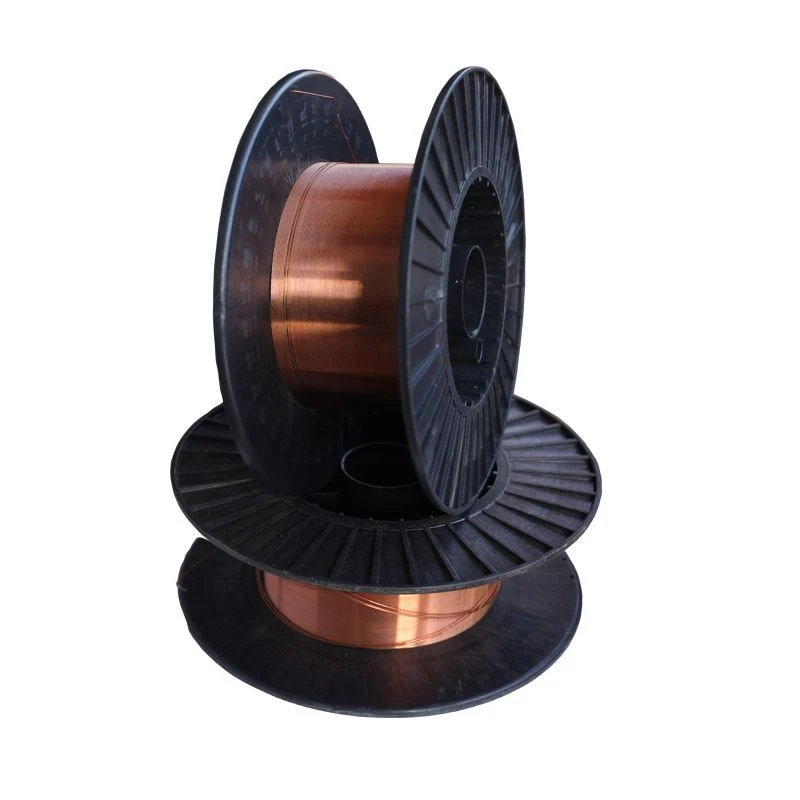1/8 or 3/32 welding rod
Feb . 05, 2025 04:32
Choosing the right welding rod is critical for successful welding projects, and understanding the specifics of rods such as 1/8 or 3/32 welding rods can significantly impact the quality and efficiency of your work. As an experienced welder and an expert in welding equipment, it’s essential to share insights that ensure authoritative and trustworthy guidance for those seeking to improve their welding skills and results.
In contrast, 3/32-inch welding rods are characterized by their ability to deliver precise welds with delicate control, making them particularly effective for thin or lighter materials, generally below 3/16-inch thickness. Their smaller diameter allows for tighter control over the bead and less heat input, reducing the risk of warping or burning through the substrate. These rods are predominantly used in applications such as auto body repair, thin-sheet fabrication, and crafts that require fine detail work. They provide a more manageable flow, which is beneficial in achieving neat, aesthetically pleasing welds without sacrificing strength. For hobbyists and professionals alike, 3/32-inch rods offer versatility in different welding positions, including overhead and vertical-up, which require precise manipulation. Expert welders appreciate the adaptability of 3/32-inch rods in various environments, recognizing them as ideal for creating quality welds on lightweight projects. However, when using these rods, it is critical that welders have a steady hand and an understanding of the appropriate amperage settings to prevent overheating the material. Choosing Between 1/8 and 3/32-Inch Rods The decision between using 1/8 or 3/32 welding rods ultimately hinges on the material thickness, the welding position, and the desired finish quality. Both options offer unique benefits, and the choice should be guided by careful consideration of the project’s technical requirements. An understanding of the welding environment, including factors such as power source (AC or DC), position, and necessary penetration depth, will also influence the decision. Furthermore, it's essential for welders to have a comprehensive understanding of the electrical characteristics necessary to optimize the performance of their chosen rod. The welding current (amperage) settings required will differ significantly between the two diameters. 1/8-inch rods generally require higher amperage compared to their 3/32-inch counterparts to achieve proper penetration and maintain an even weld pool. Ultimately, mastering the art of welding with 1/8 or 3/32 rods enhances a welder’s skill and project outcomes, leading to a more efficient, reliable, and quality-focused craftsmanship in their field. With experience and expertise, welders can effectively select and utilize the appropriate rod for each individual project, ensuring both the strength and aesthetic quality of their welds are uncompromised.


In contrast, 3/32-inch welding rods are characterized by their ability to deliver precise welds with delicate control, making them particularly effective for thin or lighter materials, generally below 3/16-inch thickness. Their smaller diameter allows for tighter control over the bead and less heat input, reducing the risk of warping or burning through the substrate. These rods are predominantly used in applications such as auto body repair, thin-sheet fabrication, and crafts that require fine detail work. They provide a more manageable flow, which is beneficial in achieving neat, aesthetically pleasing welds without sacrificing strength. For hobbyists and professionals alike, 3/32-inch rods offer versatility in different welding positions, including overhead and vertical-up, which require precise manipulation. Expert welders appreciate the adaptability of 3/32-inch rods in various environments, recognizing them as ideal for creating quality welds on lightweight projects. However, when using these rods, it is critical that welders have a steady hand and an understanding of the appropriate amperage settings to prevent overheating the material. Choosing Between 1/8 and 3/32-Inch Rods The decision between using 1/8 or 3/32 welding rods ultimately hinges on the material thickness, the welding position, and the desired finish quality. Both options offer unique benefits, and the choice should be guided by careful consideration of the project’s technical requirements. An understanding of the welding environment, including factors such as power source (AC or DC), position, and necessary penetration depth, will also influence the decision. Furthermore, it's essential for welders to have a comprehensive understanding of the electrical characteristics necessary to optimize the performance of their chosen rod. The welding current (amperage) settings required will differ significantly between the two diameters. 1/8-inch rods generally require higher amperage compared to their 3/32-inch counterparts to achieve proper penetration and maintain an even weld pool. Ultimately, mastering the art of welding with 1/8 or 3/32 rods enhances a welder’s skill and project outcomes, leading to a more efficient, reliable, and quality-focused craftsmanship in their field. With experience and expertise, welders can effectively select and utilize the appropriate rod for each individual project, ensuring both the strength and aesthetic quality of their welds are uncompromised.
Related Video
Copyright © 2025 Dingzhou Jinlong Metal Production Co., Ltd. All Rights Reserved. Sitemap | Privacy Policy




























